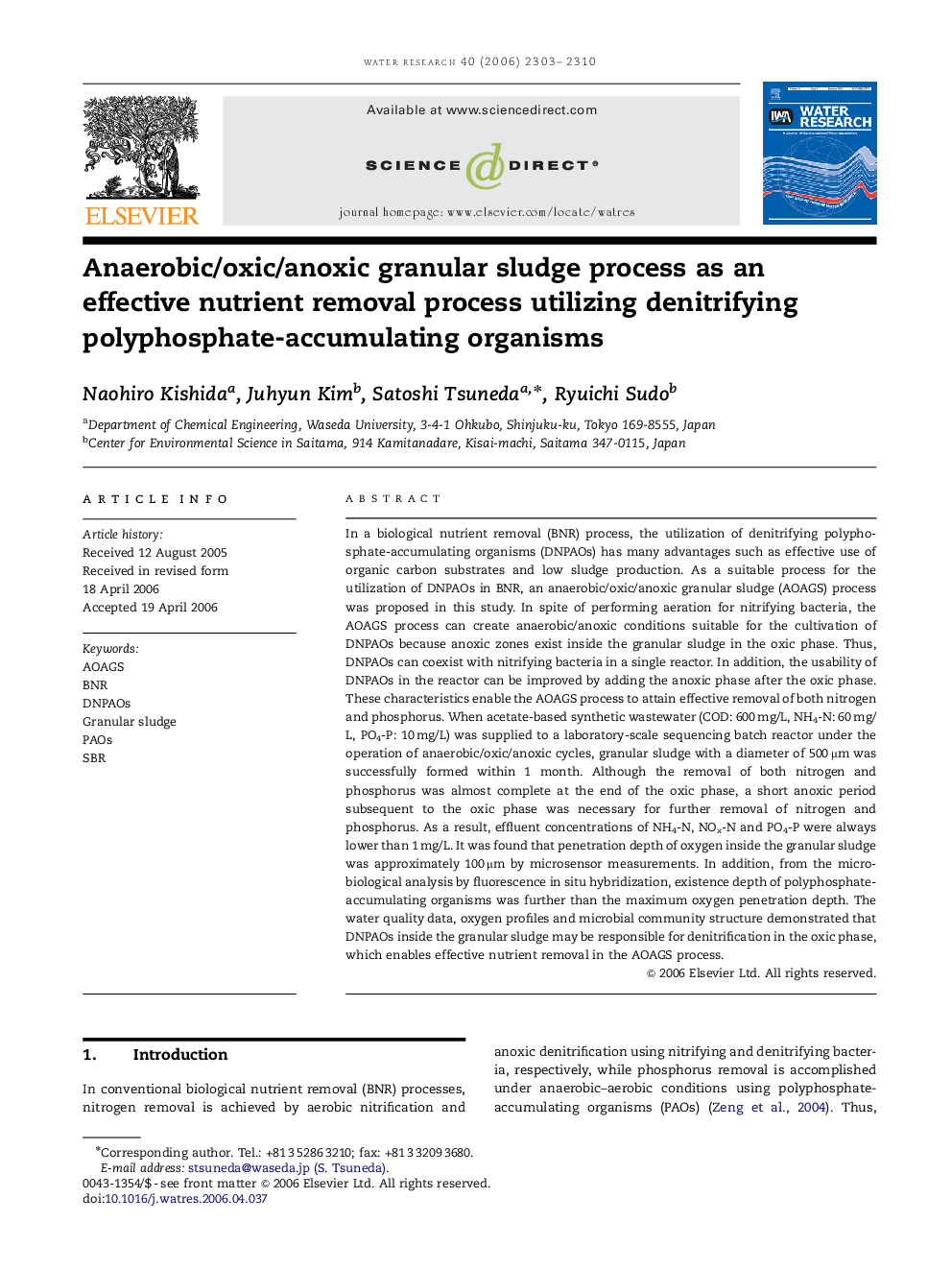| کد مقاله | کد نشریه | سال انتشار | مقاله انگلیسی | نسخه تمام متن |
|---|---|---|---|---|
| 4487188 | 1317018 | 2006 | 8 صفحه PDF | دانلود رایگان |

In a biological nutrient removal (BNR) process, the utilization of denitrifying polyphosphate-accumulating organisms (DNPAOs) has many advantages such as effective use of organic carbon substrates and low sludge production. As a suitable process for the utilization of DNPAOs in BNR, an anaerobic/oxic/anoxic granular sludge (AOAGS) process was proposed in this study. In spite of performing aeration for nitrifying bacteria, the AOAGS process can create anaerobic/anoxic conditions suitable for the cultivation of DNPAOs because anoxic zones exist inside the granular sludge in the oxic phase. Thus, DNPAOs can coexist with nitrifying bacteria in a single reactor. In addition, the usability of DNPAOs in the reactor can be improved by adding the anoxic phase after the oxic phase. These characteristics enable the AOAGS process to attain effective removal of both nitrogen and phosphorus. When acetate-based synthetic wastewater (COD: 600 mg/L, NH4-N: 60 mg/L, PO4-P: 10 mg/L) was supplied to a laboratory-scale sequencing batch reactor under the operation of anaerobic/oxic/anoxic cycles, granular sludge with a diameter of 500 μm was successfully formed within 1 month. Although the removal of both nitrogen and phosphorus was almost complete at the end of the oxic phase, a short anoxic period subsequent to the oxic phase was necessary for further removal of nitrogen and phosphorus. As a result, effluent concentrations of NH4-N, NOx-N and PO4-P were always lower than 1 mg/L. It was found that penetration depth of oxygen inside the granular sludge was approximately 100 μm by microsensor measurements. In addition, from the microbiological analysis by fluorescence in situ hybridization, existence depth of polyphosphate-accumulating organisms was further than the maximum oxygen penetration depth. The water quality data, oxygen profiles and microbial community structure demonstrated that DNPAOs inside the granular sludge may be responsible for denitrification in the oxic phase, which enables effective nutrient removal in the AOAGS process.
Journal: Water Research - Volume 40, Issue 12, July 2006, Pages 2303–2310